Contemporary Church History Quarterly
Volume 20, Number 4 (December 2014)
Review of J. J. Carney, Rwanda Before the Genocide: Catholic Politics and Ethnic Discourse in the Late Colonial Era (New York: Oxford University Press 2014), Xi + 343 Pp., ISBN 978-0-19-998227-1.
By Björn Krondorfer, Northern Arizona University
Much attention has been paid by contemporary church historians to questions of complicity of the German churches during the 1930s and 1940s and to theological responses to racist Nazi ideology that led to the genocidal murder of European Jews. Now J. J. Carney is shifting our focus to a similar set of questions regarding the role of the Catholic Church in Rwanda, asking how certain patterns of ethnic discourse and late-colonial missionizing efforts exacerbated the Hutu-Tutsi divide that culminated in the 100-day slaughter of an estimated 800,000 Tutsi and moderate Hutu in 1994. “One of the most Catholic countries in Africa suffered the worst genocide of the late twentieth century,” Carney writes in the opening lines of his fine study. “Christians slaughtered Christians in Christian schools and parishes” (p. 1). What accounts for the failure of the church to uphold unity among Christians? How did clergy and missionaries contribute to dividing the banyarwanda (Rwanda people) along the lines of politically contested labels of ethnicity?
 After the genocide, Cardinal Roger Etchegaray asked church leaders in Rwanda if “the blood of tribalism proved deeper than the waters of baptism”—a question that seems to speak deeply to Carney’s investigation of the role of the church. Carney quotes it both in the Introduction and the Epilogue (pp. 2, 207), though not in support of the idea of “tribalism.” On the contrary, he argues that the Hutu-Tutsi division was mobilized ideologically for defining Rwanda’s national independence from colonialism. As a historian, however, he wonders why people of the same faith ended up slaughtering each other. As a matter of fact, whereas Catholic parishes served as sanctuaries during anti-Tutsi violence in the years 1959 to 1964, this protection utterly failed in 1994, when “more Tutsi died in churches than anywhere else” (p. 197). An estimated 75,000 were slaughtered in the Kabgayi parish alone, the center of Catholic life since the early twentieth century. Throughout Rwanda, more than 200 priests and people from religious orders (mostly Tutsi) were killed, while other priests actively endorsed or supported the interahamwe militias, like diocesan priest Fr. Athanase Seromba, who burned down a church with 2,000 Tutsi inside (p. 308, n.124). How can we account for the dramatic shift from Catholic sanctuary to mortuary?
After the genocide, Cardinal Roger Etchegaray asked church leaders in Rwanda if “the blood of tribalism proved deeper than the waters of baptism”—a question that seems to speak deeply to Carney’s investigation of the role of the church. Carney quotes it both in the Introduction and the Epilogue (pp. 2, 207), though not in support of the idea of “tribalism.” On the contrary, he argues that the Hutu-Tutsi division was mobilized ideologically for defining Rwanda’s national independence from colonialism. As a historian, however, he wonders why people of the same faith ended up slaughtering each other. As a matter of fact, whereas Catholic parishes served as sanctuaries during anti-Tutsi violence in the years 1959 to 1964, this protection utterly failed in 1994, when “more Tutsi died in churches than anywhere else” (p. 197). An estimated 75,000 were slaughtered in the Kabgayi parish alone, the center of Catholic life since the early twentieth century. Throughout Rwanda, more than 200 priests and people from religious orders (mostly Tutsi) were killed, while other priests actively endorsed or supported the interahamwe militias, like diocesan priest Fr. Athanase Seromba, who burned down a church with 2,000 Tutsi inside (p. 308, n.124). How can we account for the dramatic shift from Catholic sanctuary to mortuary?
As the book’s title indicates, Carney does not focus on the1994 genocide itself but investigates Catholic Church politics in early decades, especially in the 1950s and early 1960s. Carney identifies this period as essential for setting up patterns that later get utilized and mobilized in the genocide. He carefully avoids pronouncing a sweeping judgment that either blames or exonerates the church. He also does not pursue a deterministic view of history: the patterns he identifies contributing to the increasingly hostile rift between Hutu and Tutsi do not point to a predictable (and therefore preventable) future genocidal outcome. Carney presents a nuanced picture of multifarious voices within the Catholic Church. Situated between, on the one hand, the church’s alliance with the Rwandan nobility and Tutsi elites dating back to successful early missionary efforts and, on the other hand, its growing support of social reform politics in the 1950s in favor of impoverished peasants (largely, but not exclusively Hutu), missionary and church leaders presented varying explanations for the woes plaguing Rwanda’s social and political landscape. Despite advocating unity in the church and condemning the sporadic pre-1994 violence, many of these leaders nevertheless actively participated in an ethno-political and national-reform discourse that, at least in retrospect, aggravated the conflict.
Carney suggests revising the standard explanation of the complicity of the churches. He distances himself from the more popular view of a “primordial tribal hatred between Hutu and Tutsi” ( p. 2) as well as from majority scholarly explanations that argue that colonial officials and Catholic missionaries taught Hutu and Tutsi “to see each other as separate racial groups” (p. 2). Whereas the former view has been debunked as a colonialist narrative, the latter simplifies complex historical developments and reduces the Rwandan people to puppets of colonial powers, thereby denying them active political agency. Carney also notes that current scholarship on Rwanda’s church history does not pay attention to the important decades of the 1950s and 1960s. According to Carney, the standard narrative correctly points to the missionary alliance with the Tutsi elite before the 1940s, but “then skips to the 1980s and 1990s” (p. 2), when the church had already realigned itself with the Parmehutu, the Hutu national party that assumed political power. Before the outbreak of genocide in 1994, the church had formed close ties to Hutu President Habyarimana and Hutu Archbishop Vincent Nsengiyumva.
This standard narrative, according to Carney, is present in the works of Mahmood Mamdani (When Victims Become Killers: Colonialism, Nativism, and the Genocide in Rwanda, 2001) and Timothy Longman (Christianity and Genocide in Rwanda, 2010). Carney does not dispute their observation that institutional church interests contributed to the entrenchment of ethnic labeling, but he suggests that the 1950s have been largely neglected, although they were crucial to the politicization of ethnicity. It was in the 1950s, Carney argues, that all other identities (such as clan, patron-client, religious) were “subsumed under the Hutu-Tutsi dynamic” (p. 3); it was also in the 1950s when major players in the Catholic Church and European missions shifted their sympathies to Hutu social reform ideas that advocated a “more egalitarian Rwanda society marked by social justice, democracy, and economic equality” (p. 3).
The shift of church politics from pre-1940 alliance with Tutsi elites to post-1950s Hutu sympathies (and subsequent close church-state relations to the Hutu political regime, first under President Kayibanda, then Habyarimana) deserves close attention, as Carney persuasively argues. This shift, however, seems contradictory, given the old colonial race theory as articulated in the Hamitic thesis. The Hamitic thesis perceived Tutsi as racially superior. Based on the biblical curse of Ham (Genesis 9), combined with nineteenth century race theories, European missionaries and colonial explorers considered the Tutsi as civilizers of the Bantu African population, the Hutu. Europeans felt an affinity to the Tutsi, described by some as “Caucasians under a black skin” (p. 11), ignoring the fact that social class divisions crisscrossed the Hutu-Tutsi difference (since many Tutsi belonged to the landless peasantry as well). According to the Hamitic thesis, the missionaries should have kept their loyalty with the Tutsi. But this is not what happened. Early missionaries actually poured their conversion efforts into the landless class—the disempowered, largely Hutu peasants, who, in turn, hoped that the Europeans would advocate on their behalf against their mostly Tutsi patrons. Yet, the missionaries did not succeed with their conversion program until the Tutsi king Mwami Musinga allowed them to establish missions in central Rwanda, like the above-mentioned Kabgayi. It eventually led to la tornade, a French term for mass conversions of mostly Tutsi in the 1930s, and to the establishment of Rwanda as a “Christian kingdom” in the 1940s.
The White Fathers, a French missionary order, played a crucial role in these developments. Carney’s study presents several leading figures among the White Fathers and analyzes their writings with respect to political and ethnic rhetoric. For example, Charles Lavigerie, the earlier visionary of the White Fathers in the 1880s, advocated that missionaries sent to Africa were to adopt indigenous customs and languages. His motto: “to the weak I became weak, to win over the weak” (1 Cor 9:22). Yet, Lavigerie also insisted on a model of top-down evangelization, a preference continued by Mgr. Léon Classe, another influential White Father, who therefore allied himself with the royal court of Mwami Musanga. By all accounts, this strategic choice paid off: by the 1940s, Rwanda had become a majority Catholic country.
In the 1950s, however, those sympathies began to shift toward the Hutu cause of social reform, and here the decisive role fell to White Father André Perraudin. Fearing communism and secularism more than anything, Perraudin and other White Fathers embraced Catholic social teachings (based on the 1891 encyclical Rerum Novarum) with which they sought to stem communist ideas. They advocated abolishing traditional feudal systems, like the ubuhake, in favor of Western economic and democratic policies. The ubuhake bound a landless client population to the protection of their mostly Tutsi patrons. In the early 1950s, White Fathers and Hutu leaders shared visions of a pan-ethnic, democratically reformed nation that would lead to equality among the banyarwanda and neutralize of what was feared as a godless communist revolution. Strangely—at least in retrospect—the Tutsi nationalist party UNAR (Union Nationale Rwandaise, formed in 1959), with its strong anti-colonial and anti-missionary rhetoric, was condemned as communist.
These contextualizing historical developments are covered in the first three chapters, setting the stage for the years 1956-1962, which are at the heart of Carney’s analysis. Chapter 4 looks at the period of 1956-1959, in which tensions between Hutu and Tutsi grew due to the political mobilization of ethnic divisions. Chapter 5 covers the period of 1959-1962, when the Tutsi monarchy was replaced by a democratic republic. De facto, however, this republic was a Hutu dominated one-party state, leading to the first waves of severe anti-Tutsi violence and expulsions.
In these two central chapters, Carney proves himself a prudent observer who skillfully weaves together material from an abundance of primary sources. I limit myself here to three salient points. First, Carney repeatedly refers to the role of the évolués, the indigenous African elite trained in European-style missionary schools and seminaries. The évolués are conceptually important for Carney’s study because they validate the role of indigenous Africans as major political agents (over against a simplified thesis of an all-powerful European dominance). The évolués are historically important since both Hutu and Tutsi students were groomed in the seminaries. Yet, instead of building a cohort ensuring the unity of the Christian church, they became leaders in separate and later antagonistic organizations, like the Parmehutu and UNAR. Some of the leaders became the first indigenous African priests and bishops in the then Belgian colony; other turned to secular politics. In either case, personal ties forged in the seminaries often extended into later political loyalties in church-state relations.
Second, Carney weaves into his historical analysis a comparison between two key figures, Aloys Bigirumwami, the first indigenous bishop in Belgian Africa, and André Perraudin, a Swiss White Father and Archbishop of Kabgayi from 1956 to 1989. These two men became protagonists in the church’s struggle, personifying two different perspectives as to the cause of, and remedy for, Rwanda’s increasing ethnic-sectarian discourse. Bigirumwami, from a mixed Hutu-Tutsi background, had been seen at his time as a conservative leaning bishop not swept up in the promotion of Catholic social teachings in support of the Hutu social reform movement. Instead, he incessantly cautioned “against the darker side of these movements” (p. 123), perceiving the real danger not coming from traditional feudalism or modern communism but from violence lurking in Rwanda’s growing ethnicism. Perraudin, in contrast, kept pushing the social reform agenda and aligned himself with the Hutu cause (and later with the Hutu one-party state). Though both Perraudin and Bigirumwami issued joint pastoral letters against the violence they witnessed, they had strikingly different views of the events. Perraudin kept downplaying the anti-Tutsi violence, justifying it as an understandable outburst of Hutu anger. As late as June of 1994, Perraudin, from his retirement home in Switzerland, laid blame for the genocide on the RPF, the Tutsi Rwanda Patriotic Front, that ended the genocide in July of 1994. Bigirumwami, for his part, was replaced in 1974 by Hutu bishop Vincent Nsengiyumva, who two years later became Archbishop of Kigali, with close ties to President Habyarimana’s government. Here, Carney allows himself an ethical judgment, articulating his frustration with Perraudin’s unwavering “air of self-righteousness” (pp. 200-01), while repeatedly calling Bigirumwami a lone prophetic voice. Bigirumwami, Carney laments, has been all but forgotten in the standard narrative, but he wants to rescue him from oblivion.
Third, Carney’s study teaches us to be careful about the abuse of a one-sided partisanship regarding social movements. Carney makes clear that the Hutu sympathies espoused by Perraudin and others were not rooted in liberation theology but rather in the conservative form of Rerum Novarum. He criticizes Perraudin’s church politics as a short-sighted support for the impoverished Hutu majority, falling prey to the “political instrumentalization of ethnic identities” (p. 206). Carney coins the term “analytical partisanship” to describe Perraudin’s ill-guided support of Parmehutu’s politics, preventing this churchman from naming accurately the “link between ethnicism and political violence” (p. 173).
In chapter 6, Carney presents, in quick strokes, developments after 1962, especially the escalating anti-Tutsi violence of 1963-1964 and 1973 as well as the 1972 genocide in neighboring Burundi, where a Tutsi government killed an estimated 200,000 Burundians—all leading up to the 1994 carnage. As important as these developments are, Carney makes a good choice by keeping his focus on the neglected 1950s and early 1960s—a choice partially driven by pragmatic reasons, as he explains in a footnote: the archives he consulted in Rome and Rwanda had restricted his access to materials after 1962 (p. 306, n.2).
In an eight-page epilogue, Carney ventures briefly into theological territory, drawing out some lessons for church and theology. Among others, he mentions the lack of “prophetic distance” to state power as main reason of the church’s complicity—surely a lesson learned from Bigirumwami’s lone prophetic voice; a lesson also, I might add, for many conflict zones today.


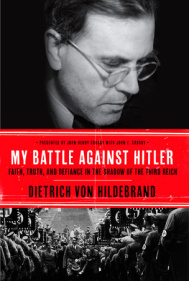
 Dietrich von Hildebrand was a German Roman Catholic philosopher opposed to the Nazis from the earliest days. Ever since 1921 the Nazis had him on their blacklist. The Dietrich von Hildebrand Legacy Project, currently headquartered at the Franciscan University of Steubenville in Steubenville, Ohio, oversees the translation, publication, and promotion of von Hildebrand’s work. Despite their efforts, his work continues to be not very well known.
Dietrich von Hildebrand was a German Roman Catholic philosopher opposed to the Nazis from the earliest days. Ever since 1921 the Nazis had him on their blacklist. The Dietrich von Hildebrand Legacy Project, currently headquartered at the Franciscan University of Steubenville in Steubenville, Ohio, oversees the translation, publication, and promotion of von Hildebrand’s work. Despite their efforts, his work continues to be not very well known.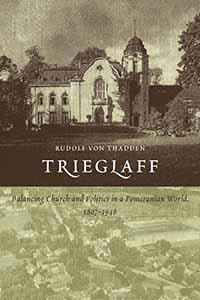
 The patriarch, Adolf von Thadden, inherited the estate after Napoleon’s defeat and was greatly influenced by the wave of pietistic fervor which swept across Germany in those years. He turned Trieglaff into a center for revivalist meetings for the whole of Pomerania. This was a strongly conservative faith which maintained an uncritical biblical fundamentalism and often expressed itself in sectarian excesses. But it sought to uphold the witness of the individual believer and to prevent the incursion of rationalist or secular ideas. In particular, the Trieglaffers resented the top-heavy controls exercised over the church by state officials, who obeyed the commands of the monarch King Frederick William III in uniting the Lutheran and Reformed adherents into one United Prussian Church. The result was a clash in the village and the secession of a group true to their former loyalties and calling themselves Old Lutherans. They even built their own church at the other end of the village which still survives today.
The patriarch, Adolf von Thadden, inherited the estate after Napoleon’s defeat and was greatly influenced by the wave of pietistic fervor which swept across Germany in those years. He turned Trieglaff into a center for revivalist meetings for the whole of Pomerania. This was a strongly conservative faith which maintained an uncritical biblical fundamentalism and often expressed itself in sectarian excesses. But it sought to uphold the witness of the individual believer and to prevent the incursion of rationalist or secular ideas. In particular, the Trieglaffers resented the top-heavy controls exercised over the church by state officials, who obeyed the commands of the monarch King Frederick William III in uniting the Lutheran and Reformed adherents into one United Prussian Church. The result was a clash in the village and the secession of a group true to their former loyalties and calling themselves Old Lutherans. They even built their own church at the other end of the village which still survives today.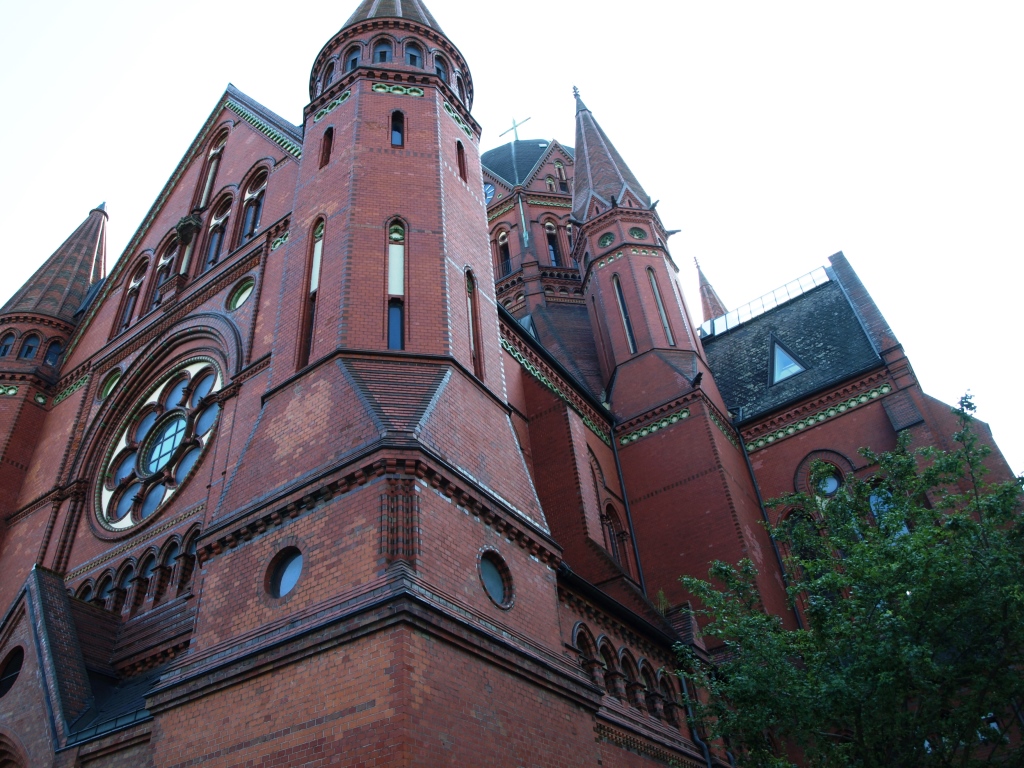
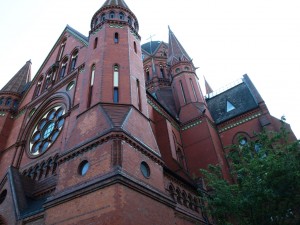

 Charles Marsh’s book is an eloquent, well-written portrayal of Bonhoeffer and his theological development from his young student days to the end of his life. Marsh offers two primary re-interpretations of Bonhoeffer’s theological development: one concerns the influence of Reinhold Niebuhr on Bonhoeffer during his year at Union as pushing Bonhoeffer to a more concrete and activist ethics once he returned to Germany. The other is an attempt to show the extent to which Bonhoeffer’s theology was influenced by Judaism, particularly the work of Martin Buber.
Charles Marsh’s book is an eloquent, well-written portrayal of Bonhoeffer and his theological development from his young student days to the end of his life. Marsh offers two primary re-interpretations of Bonhoeffer’s theological development: one concerns the influence of Reinhold Niebuhr on Bonhoeffer during his year at Union as pushing Bonhoeffer to a more concrete and activist ethics once he returned to Germany. The other is an attempt to show the extent to which Bonhoeffer’s theology was influenced by Judaism, particularly the work of Martin Buber.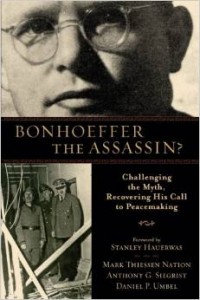 Bonhoeffer the Assassin offers a theological examination of Bonhoeffer’s writings on peace from a pacifist perspective (the authors are Anabaptists). It offers a good summary of these texts, from the early period of the 1930s through the prison period, demonstrating the strong theological continuity from his ecumenical speeches to Discipleship to Ethics that shows the centrality of a peace ethic in Bonhoeffer’s thought. The analysis and insights of these texts from a peace tradition perspective is a genuine contribution to the literature.
Bonhoeffer the Assassin offers a theological examination of Bonhoeffer’s writings on peace from a pacifist perspective (the authors are Anabaptists). It offers a good summary of these texts, from the early period of the 1930s through the prison period, demonstrating the strong theological continuity from his ecumenical speeches to Discipleship to Ethics that shows the centrality of a peace ethic in Bonhoeffer’s thought. The analysis and insights of these texts from a peace tradition perspective is a genuine contribution to the literature.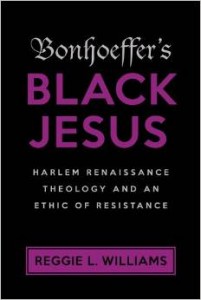 Reggie Williams’ Bonhoeffer’s Black Jesus builds on Young’s insights but breaks new ground in offering a detailed and vibrant portrait of the Harlem Renaissance that was in full blossom during Bonhoeffer’s time in New York. The course syllabi and reading lists for Bonhoeffer during this time (published in DBWE 10) show that Bonhoeffer read a number of books by black authors like Countee Cullen, and Williams talks about what it was the Bonhoeffer was actually reading, how authors like Cullen and W. E. B. Du Bois thought about racism in the broader sense, and what he would have encountered in the culture at Abyssinian Baptist Church and beyond.
Reggie Williams’ Bonhoeffer’s Black Jesus builds on Young’s insights but breaks new ground in offering a detailed and vibrant portrait of the Harlem Renaissance that was in full blossom during Bonhoeffer’s time in New York. The course syllabi and reading lists for Bonhoeffer during this time (published in DBWE 10) show that Bonhoeffer read a number of books by black authors like Countee Cullen, and Williams talks about what it was the Bonhoeffer was actually reading, how authors like Cullen and W. E. B. Du Bois thought about racism in the broader sense, and what he would have encountered in the culture at Abyssinian Baptist Church and beyond.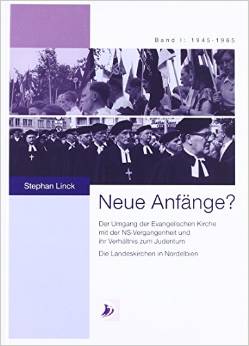
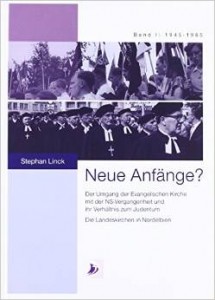 In Neue Anfänge? Der Umgang der Evangelischen Kirche mit der NS-Vergangenheit und ihr Verhältnis zum Judentum. Die Landeskirchen in Nordelbien. Band 1: 1945-1965, Stephan Linck analyses the situation in the four Protestant churches which united in 2012 to form the Evangelical Church of North Elbia. He had earlier organized a travelling exhibition which did much to break the silence about these churches’ failures in former years. His central point is that this part of Germany had a long history of extreme nationalism, backed by Lutheran authoritarianism. This made these congregations particularly susceptible to Nazi anti-Semitic propaganda and encouraged their extremist and anti-communist attitudes, which were only reinforced in this region after 1945, when so many refugees fled to the region to escape the Russian occupation and the subsequent Communist domination of eastern Europe. These churches’ active support of the refugees’ desire to regain their homelands, in Linck’s view, only exacerbated their reactionary political attitudes and entrenched their prejudices.
In Neue Anfänge? Der Umgang der Evangelischen Kirche mit der NS-Vergangenheit und ihr Verhältnis zum Judentum. Die Landeskirchen in Nordelbien. Band 1: 1945-1965, Stephan Linck analyses the situation in the four Protestant churches which united in 2012 to form the Evangelical Church of North Elbia. He had earlier organized a travelling exhibition which did much to break the silence about these churches’ failures in former years. His central point is that this part of Germany had a long history of extreme nationalism, backed by Lutheran authoritarianism. This made these congregations particularly susceptible to Nazi anti-Semitic propaganda and encouraged their extremist and anti-communist attitudes, which were only reinforced in this region after 1945, when so many refugees fled to the region to escape the Russian occupation and the subsequent Communist domination of eastern Europe. These churches’ active support of the refugees’ desire to regain their homelands, in Linck’s view, only exacerbated their reactionary political attitudes and entrenched their prejudices. These same features were on display in the Bavarian Protestant Church, too. They are the subject of Björn Mensing’s chapter in the collection of essays edited by Antonia Leugers, entitled Zwischen Revolutionsschock und Schulddebatte. Münchner Katholizismus und Protestantismus im 20. Jahrhundert. Mensing also comments acerbically on the apologetic and self-serving accounts of Bavarian Protestantism written by survivors, which excused the early and enthusiastic support given to Adolf Hitler as stemming from a desire to prevent a victory for Communism and as a sign of the “rechristianising” of a war-torn Germany. Those few voices calling for a more critical and less self-justifying account of the Nazi years were quickly sidelined. So too those who had been involved in the 1944 plot to overthrow Hitler and had been executed as a result, such as Dietrich Bonhoeffer, were regarded by the majority of the Bavarian Protestant leaders as “traitors to the national cause”. Mensing, who is now the Pastor of the Church of Reconciliation erected in the former concentration camp at Dachau, recounts with some bitterness the opposition to the building of this chapel by the former pro-Nazi pastor of the neighboring parish, clearly backed by the majority of his parishioners. It was only after the generation of participants in the Nazi years had all passed from the scene that a more fitting recognition of the church’s failures and a new sense of repentance could be encouraged. Mensing blames the continuing influence of the conservative leadership in the Bavarian Protestant Church for the slowness with which a greater sense of repentance and reconciliation has at last been adopted. But in view of the entrenched national conservatism of most Bavarian Protestants, Mensing believes there is still a long way to go before the deficiencies of the past can be finally laid to rest.
These same features were on display in the Bavarian Protestant Church, too. They are the subject of Björn Mensing’s chapter in the collection of essays edited by Antonia Leugers, entitled Zwischen Revolutionsschock und Schulddebatte. Münchner Katholizismus und Protestantismus im 20. Jahrhundert. Mensing also comments acerbically on the apologetic and self-serving accounts of Bavarian Protestantism written by survivors, which excused the early and enthusiastic support given to Adolf Hitler as stemming from a desire to prevent a victory for Communism and as a sign of the “rechristianising” of a war-torn Germany. Those few voices calling for a more critical and less self-justifying account of the Nazi years were quickly sidelined. So too those who had been involved in the 1944 plot to overthrow Hitler and had been executed as a result, such as Dietrich Bonhoeffer, were regarded by the majority of the Bavarian Protestant leaders as “traitors to the national cause”. Mensing, who is now the Pastor of the Church of Reconciliation erected in the former concentration camp at Dachau, recounts with some bitterness the opposition to the building of this chapel by the former pro-Nazi pastor of the neighboring parish, clearly backed by the majority of his parishioners. It was only after the generation of participants in the Nazi years had all passed from the scene that a more fitting recognition of the church’s failures and a new sense of repentance could be encouraged. Mensing blames the continuing influence of the conservative leadership in the Bavarian Protestant Church for the slowness with which a greater sense of repentance and reconciliation has at last been adopted. But in view of the entrenched national conservatism of most Bavarian Protestants, Mensing believes there is still a long way to go before the deficiencies of the past can be finally laid to rest.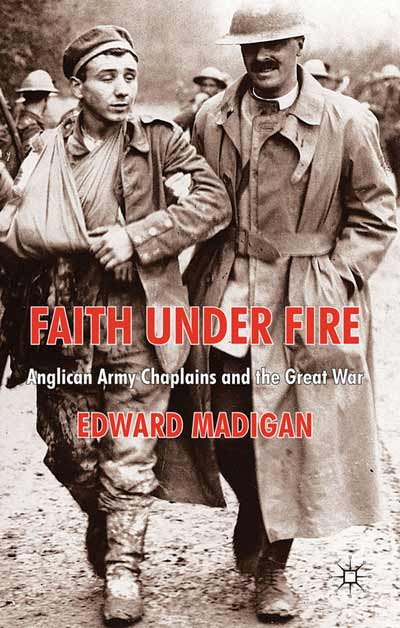
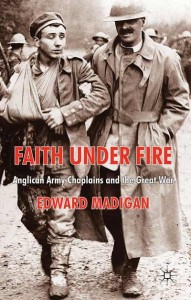 Edward Madigan’s valuable study begins with a comprehensive survey of the literature about chaplains and their war-time contributions, some written by chaplains themselves, such a Ernest Raymond’s Tell England, or the far more influential novel by Robert Graves, Goodbye to all That. Many of these books presented a largely negative picture of the war records of these chaplains, finding that they were generally not respected by either officers or men, being considered inadequate to the tasks they faced.
Edward Madigan’s valuable study begins with a comprehensive survey of the literature about chaplains and their war-time contributions, some written by chaplains themselves, such a Ernest Raymond’s Tell England, or the far more influential novel by Robert Graves, Goodbye to all That. Many of these books presented a largely negative picture of the war records of these chaplains, finding that they were generally not respected by either officers or men, being considered inadequate to the tasks they faced.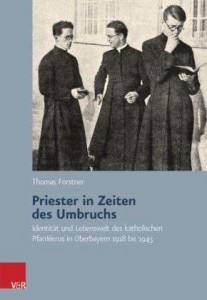 From the outset, Forstner makes it clear that his book will depart from the following works: Thomas Breuer’s Verordneter Wandel? Der Widerstreit zwischen nationalsozialistischem Herrschaftsanspruch und traditionaler Lebenswelt im Erzbistum Bamberg (Mainz: Matthias-Grünewald, 1992); Thomas Fandel’s Konfession und Nationalsozialismus: Evangelische und katholische Pfarrer in der Pfalz 1930-1939 (Paderborn: Ferdinand Schöningh, 1997); and Tobias Haaf’s Von volksverhetzenden Pfaffen und falschen Propheten: Klerus und Kirchenvolk im Bistum Würzburg in der Auseinandersetzung mit dem Nationalsozialismus (Würzburg: Ferdinand Schöningh, 2005). All of these works, he argues, centered primarily on questions relating to resistance and politics without significant consideration of priestly culture and everyday life. Forstner places my own 2004 study, Resisting the Third Reich: The Catholic Clergy in Hitler’s Berlin (DeKalb, Illinois: Northern Illinois University Press) in the same category, though he does acknowledge that my work included “some” discussion of priestly culture. By contrast to these studies, Forstner seeks to understand specifically the all-too often hermetic world of Munich’s clergy, especially their pastoral training, outlook, and practices, quite closely akin to Monika Nickel’s Habilitation, Die Passauer theologisch-praktische Monatsschrift: Ein Standesorgan des Bayerischen Klerus an der Wende vom 19. Zum 20. Jahrhundert (Passau: Dietmar Klinger, 2004), a study upon which Forstner lavishes great praise. Nickel’s work examined pastoral practice addressed in the Passau Monthly of Practical Theology.
From the outset, Forstner makes it clear that his book will depart from the following works: Thomas Breuer’s Verordneter Wandel? Der Widerstreit zwischen nationalsozialistischem Herrschaftsanspruch und traditionaler Lebenswelt im Erzbistum Bamberg (Mainz: Matthias-Grünewald, 1992); Thomas Fandel’s Konfession und Nationalsozialismus: Evangelische und katholische Pfarrer in der Pfalz 1930-1939 (Paderborn: Ferdinand Schöningh, 1997); and Tobias Haaf’s Von volksverhetzenden Pfaffen und falschen Propheten: Klerus und Kirchenvolk im Bistum Würzburg in der Auseinandersetzung mit dem Nationalsozialismus (Würzburg: Ferdinand Schöningh, 2005). All of these works, he argues, centered primarily on questions relating to resistance and politics without significant consideration of priestly culture and everyday life. Forstner places my own 2004 study, Resisting the Third Reich: The Catholic Clergy in Hitler’s Berlin (DeKalb, Illinois: Northern Illinois University Press) in the same category, though he does acknowledge that my work included “some” discussion of priestly culture. By contrast to these studies, Forstner seeks to understand specifically the all-too often hermetic world of Munich’s clergy, especially their pastoral training, outlook, and practices, quite closely akin to Monika Nickel’s Habilitation, Die Passauer theologisch-praktische Monatsschrift: Ein Standesorgan des Bayerischen Klerus an der Wende vom 19. Zum 20. Jahrhundert (Passau: Dietmar Klinger, 2004), a study upon which Forstner lavishes great praise. Nickel’s work examined pastoral practice addressed in the Passau Monthly of Practical Theology.